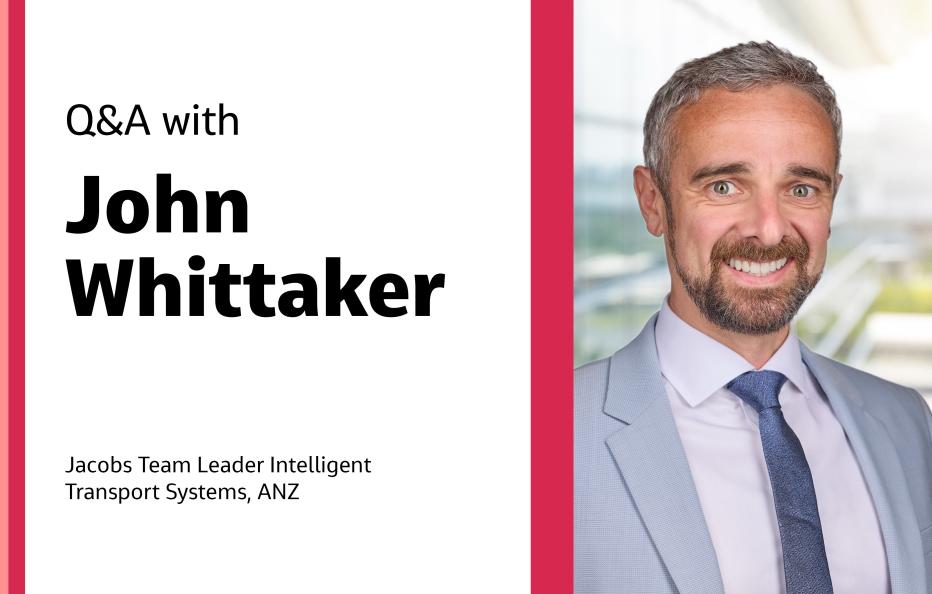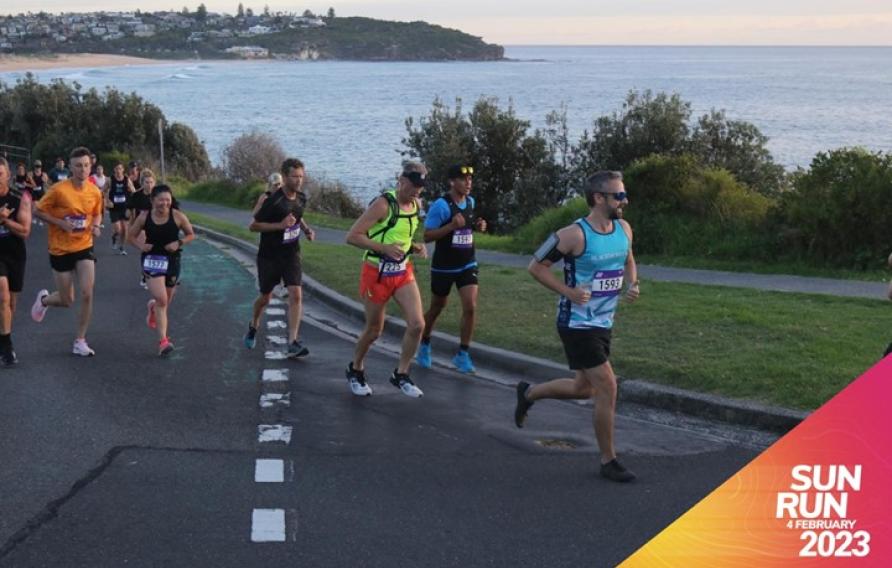
We’re living in the era of digital disruption and we need bold digital and technology leadership now more than ever before. Leading this change demands knowledge, imagination, new thinking, an appetite to reinvent and the courage to challenge conventions.
At Jacobs, our team of digital and technology experts and visionaries are spearheading the development and delivery of our technology-forward solutions for smarter working, and better living.
Meet one such teammate, John Whittaker, our team leader for ITS in Australia and New Zealand. We recently spoke with John about the role of ITS in shaping the future of transportation and the challenges often faced when implementing ITS solutions.
Hi John! Tell us a bit about yourself and your role at Jacobs.
I’m the Australia and New Zealand Team Lead for ITS and also a principal engineer.
I started my career as a graduate engineer in the United Kingdom, but everything changed when I visited Australia as a backpacker. I fell in love with the country and decided to stay. Since then, I have worked as an engineer in Brisbane, Perth and Sydney. In 2015, I joined Jacobs as they expanded their capability and capacity to deliver major road tunnel projects. I relocated from Brisbane to Sydney to be a part of this exciting venture and have been here ever since.
How would you define ITS and its role in modern transportation?
The definition of ITS is changing. Traditionally, it’s been centered around roadside technology infrastructure that provides the tools for operators to manage the road network, sweat assets to maximize road network performance or both. More recently, the focus has moved toward integrating connected and autonomous vehicles (CAVs) into the transportation ecosystem.
What are the biggest opportunities ahead for ITS?
Data, data and more data. The sheer volume of data to be managed from connected vehicles is staggering, with a typical connected vehicle being equipped with hundreds of sensors and generating terabytes of data every hour. We’re going to see massive increases in requirements for telecommunication network capacities.
We will also see a shift in how data is collected to monitor the road network. The value of installing roadside infrastructure is reduced when the vehicles using the network can produce better data. Also, communications with drivers will move from large, expensive displays installed over or adjacent to the road to in-car information in the dashboard or heads-up display.
How have data solutions and digital technologies influenced the efficiency and safety of transportation systems?
Where does one even start? Imagine driving a car built in the nineties, accelerating it up to 100 kilometers (~62 miles) per hour and then suddenly slamming on the brakes in wet conditions. Now, compare this scenario to driving a car built this year and performing the same maneuver. The results would be drastically different, wouldn't they? The latest cars have advanced features like anti-lock braking systems, assisted braking, traction control and lane departure warning. These features are not typically found in older cars and can significantly affect road safety.
When it comes to road freight, it’s possible to operate convoys of road trains with minimal distance between vehicles by using existing technology. The braking action of the leading vehicle can be communicated to all following trucks, which will apply the brakes simultaneously without any delay: no driver fatigue, no distraction from drinking coffee or changing the music.
Can you share a cool example of what your team has recently worked on?
I’ll share two examples of where we’ve implemented ITS technologies and solutions recently:
The first is a unique tool, called ClearView, that we developed in collaboration with our geospatial teammates. The ClearView system can create a map showing the coverage expected from closed-circuit television (CCTV) cameras. In the past, when the cameras were only placed on aerial photos or 12D models, projects faced issues from potential obstructions not captured in these methods. Our system solves this problem by aggregating multiple data sources and considering factors such as vegetation, structures, noise, retaining walls, and site topography to create a more accurate visual output. Clients can easily understand the visual output and different placement options can be showcased.
The second example is radar-based traffic monitoring. We recently delivered a major project in New Zealand where we deployed radar stations to monitor traffic and detect incidents instead of the traditional in-pavement induction loops that have been used for decades. Radar-based traffic monitoring technology removes the need to cut up the pavement and all the difficulties associated with cable induction loops, particularly as this area included steep batters and winding roads with little space to install cableway. We collaborated closely with the vendor to develop a remote commissioning and calibration system, eliminating the need for physical site visits during commissioning.
What are some of the key challenges to implementing ITS solutions, and how did you overcome them??
Space-proofing may not be the most exciting task, but it’s crucial. Unfortunately, some contractors treat ITS as an afterthought and try to fit it in at the last minute, which often results in these solutions being left out of projects.
As an industry, we face the challenge of technology advancing faster than policy. Autonomous vehicles, for example, are already safer drivers than humans but are held to a higher level of accountability. If an autonomous vehicle hits a cyclist, who should be held responsible? We still have a long way to go before we can absolve the person in the "driver's" seat of any liability.
At Jacobs, we work to holistically plan critical transport infrastructure projects with our clients. We offer a full range of services – from front-end feasibility studies and policy development to full-scale strategic modeling and scheme appraisal, to the detailed analysis of projects – ensuring our clients are at the forefront of technology and policy, and equipped to make smart decisions on their infrastructure updates.
If you weren't in the office, what would we find you doing?
I recently competed in the Ironman 70.3 Western Australia. The training has made me really enjoy ocean swimming, although I've always enjoyed the cycling part. I also recently competed in my first-ever freediving pool competition. Pretty much anything related to ocean or water is my happy place. I'm keen to obtain a new freediving certification in 2024.
What do you enjoy most about being part of #OurJacobs?
The people. For all the advances in automation and artificial intelligence, life is about people and relationships. I’ve enjoyed how my career has developed with an increased focus on people as well as projects.
About the interviewee
John Whittaker has been working in the ITS industry since 2006. His career began in the U.K., including working on the pilot scheme for what we now know as “smart motorways.” He’s delivered several major infrastructure projects from both contractor and consultant perspectives. He also enjoys providing consultation and advice to state transport authorities to help achieve desired project outcomes.
Join #OurJacobs team
What drives you drives us as we work to build a better world – together. At Jacobs, every day is an opportunity to make the world better, more connected, more sustainable. We’re always looking for dynamic and engaged people to join our team. Bring your passion, your ingenuity and your vision.

















































